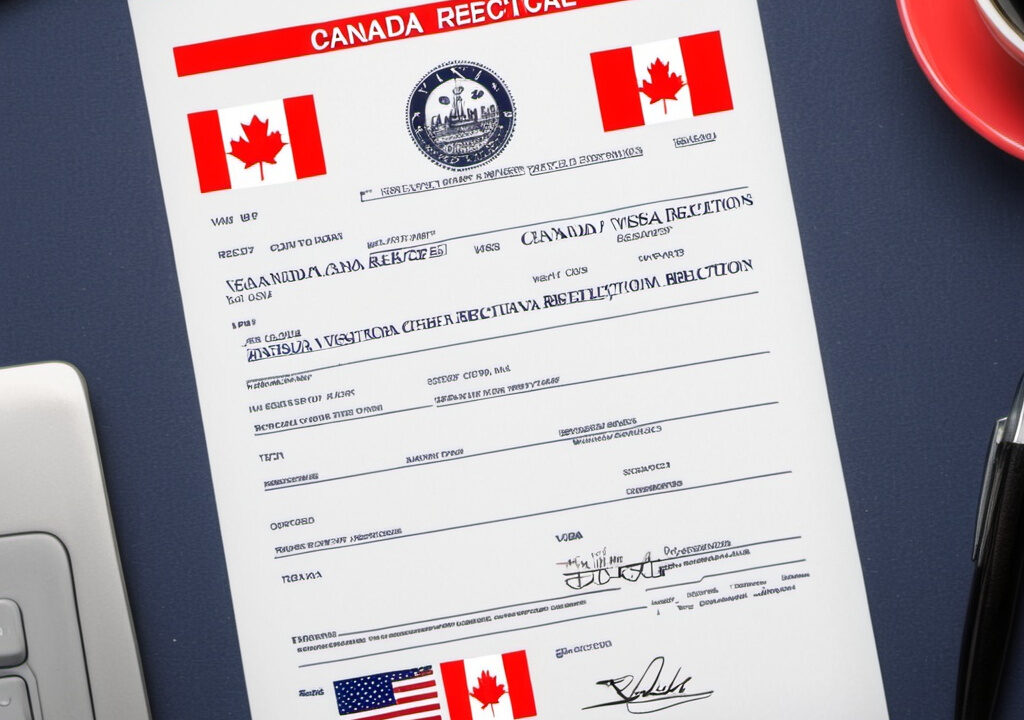Receiving a visa rejection can be a challenging and disheartening experience. Understanding why your visa application was rejected is crucial for addressing the issues and improving your chances of success in future applications. This comprehensive guide will walk you through the process of checking and understanding the reasons for your Canada visa rejection.
1. Understanding Visa Rejection Reasons
When your visa application is rejected, Immigration, Refugees, and Citizenship Canada (IRCC) will provide you with a refusal letter or notification. This document outlines the reasons for your visa rejection and is a critical tool for understanding what went wrong. Common reasons for rejection include:
- Incomplete or Incorrect Documentation: Missing documents, incorrect information, or inadequate proof of eligibility.
- Concerns About Return Intent: Suspicion that you might not leave Canada after your visa expires.
- Inadmissibility Issues: Health or criminal inadmissibility.
- Insufficient Financial Proof: Lack of evidence that you can support yourself financially during your stay.
- Unclear Purpose of Visit: Unconvincing reasons for your visit or study.
2. Receiving Your Refusal Letter
When your visa application is refused, you should receive a detailed refusal letter from IRCC. This letter typically includes:
- Reasons for Rejection: Specific reasons why your application did not meet the requirements.
- Information on How to Appeal: If applicable, details on how to appeal the decision or request a reconsideration.
- Instructions for Reapplication: Guidance on what to do if you wish to reapply.
Steps to Obtain Your Refusal Letter:
- Check Your Online Account: If you applied online through the IRCC portal, your refusal letter will be available in your account. Log in to check the status and download the letter.
- Email Notification: If you applied via paper, you might receive an email notification with the details or be asked to collect the letter from the visa office.
- Contact the Visa Office: If you haven’t received your letter or need further clarification, contact the visa office where you submitted your application.
Steps (you can do this yourself), if you need help speak to Happy Face
3. Analyzing the Refusal Letter
Once you have the refusal letter, carefully analyze it to identify the specific reasons for the rejection. Here’s how to break down the information:
- Read the Reasoning: Look for sections in the letter that detail why your application did not meet the criteria. This may include missing documents, insufficient proof of ties to your home country, or other issues.
- Check for Specific Comments: Visa officers often provide specific comments or feedback regarding the shortcomings of your application.
- Review Supporting Documents: Cross-reference the reasons for rejection with the documents you submitted to identify any gaps or errors.
Steps (you can do this yourself), if you need help speak to Happy Face
4. Common Visa Rejection Reasons and How to Address Them
Here are some common reasons for Canadian visa rejections and how to address them:
- Incomplete or Incorrect Documentation:
- Issue: Missing documents or errors in the information provided.
- Solution: Ensure all required documents are complete and accurate. Double-check forms for correctness and provide any additional documentation requested.
- Concerns About Return Intent:
- Issue: Doubts that you will leave Canada after your stay.
- Solution: Strengthen your application with evidence of strong ties to your home country, such as employment, family connections, or property ownership.
- Inadmissibility Issues:
- Issue: Health or criminal inadmissibility.
- Solution: Address health issues with medical clearance or apply for criminal rehabilitation if applicable. Provide updated medical reports or legal documents to support your case.
- Insufficient Financial Proof:
- Issue: Inadequate evidence of financial stability.
- Solution: Submit comprehensive financial documentation, such as bank statements, proof of income, and a detailed budget for your stay.
- Unclear Purpose of Visit:
- Issue: Unconvincing explanation of the purpose of your visit or study.
- Solution: Provide a detailed statement of purpose explaining the reasons for your visit or study, including how it aligns with your future plans.
Steps (you can do this yourself), if you need help speak to Happy Face
5. Reapplying After a Rejection
If you decide to reapply after a visa rejection, consider the following steps:
- Address the Issues: Correct the specific issues mentioned in the refusal letter. Ensure that your new application addresses all the points raised in the rejection.
- Gather New Documentation: If your situation has changed or you have new supporting documents, include these in your new application.
- Consult a Professional: Consider seeking advice from an immigration lawyer or consultant to help you prepare a stronger application.
6. Avoiding Common Pitfalls
To improve your chances of approval and avoid common rejection reasons:
- Follow Instructions: Adhere strictly to the instructions provided by IRCC for your visa type.
- Be Thorough and Accurate: Ensure all information and documentation are complete and accurate.
- Prepare a Strong Case: Provide detailed and convincing evidence of your purpose, financial stability, and ties to your home country.
7. Seeking Professional Help
If you find the process challenging or if your visa application was rejected for complex reasons such as inadmissibility, consulting with an immigration lawyer or consultant can be beneficial. They can provide personalized advice and help you navigate the reapplication process effectively.
Steps (you can do this yourself), if you need help speak to Happy Face
Disclaimer
Related Post :
Do I Need a Visa to Visit Canada
Can I Apply Again After Visa Refusal
Can Canada Visa Be Approved After Rejection








